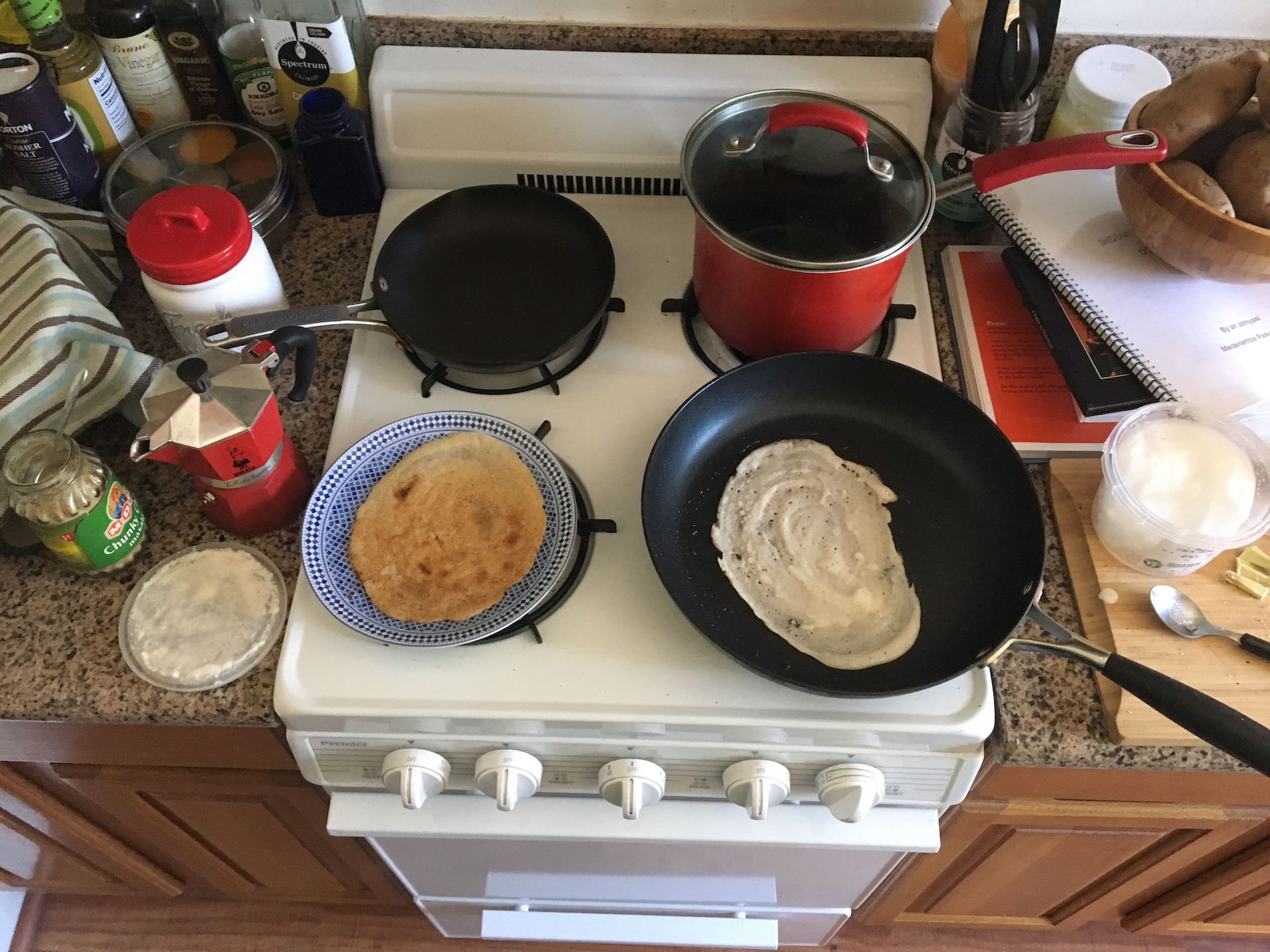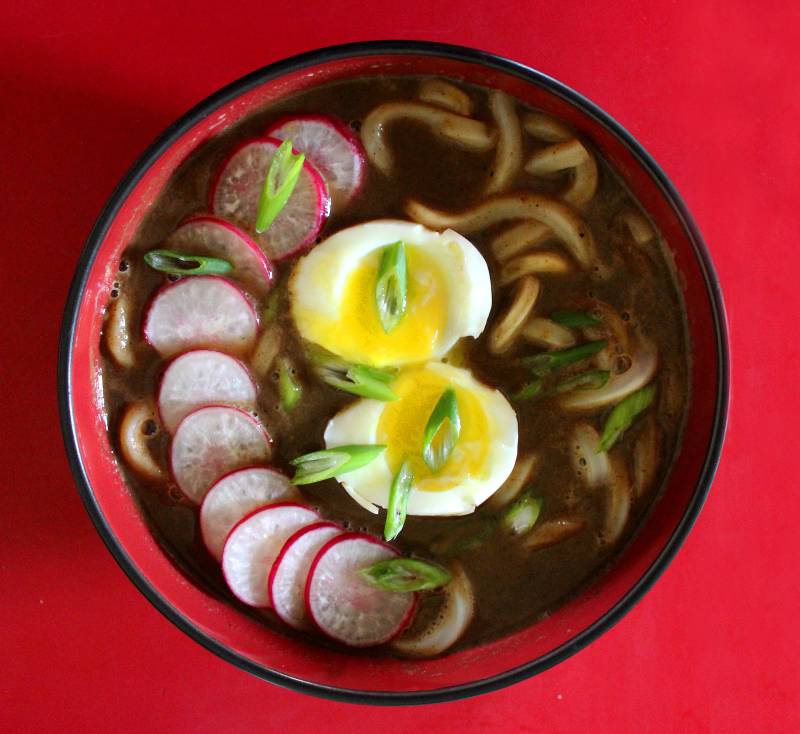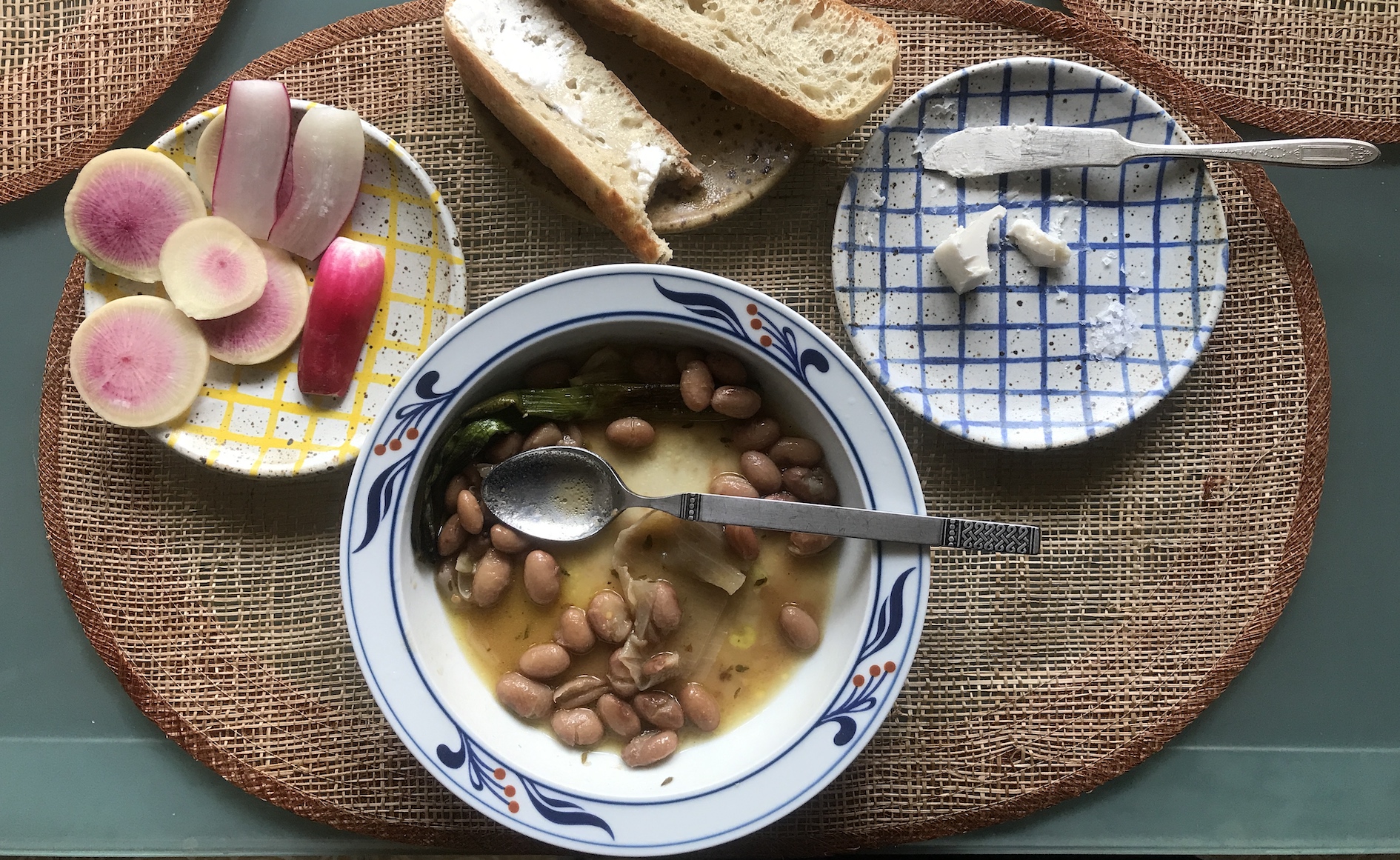In light of the shelter-in-place order, many of us have resorted to cooking at home, revisiting old recipes and getting creative with our pantries. Instead of our usual Flavors Worth Finding column with recommendations from restaurants, KQED staffers are sharing the meals they’ve been making at home to find some comfort and grounding during uncertain times.
The Noodle Soup, All Grown Up
When I was sick growing up, my dad would sometimes make me a bowl of simple noodle soup. It was just broth made with concentrated powder that came from metallic pouches, fresh noodles from Oakland’s Koreana Plaza that he always kept well stocked in our freezer, and a runny egg suspended in the center of the bowl. Maybe it was the rarity of my father taking time out of his busy day to tend to me, or the delirium of fever, but I grew convinced that a bowl of his soup would rid my body of any ailment.
Now, as an adult confined to my apartment, I’ve been experimenting with variants of this childhood comfort food, using dried mushrooms as the soup base. When soaked, the mushrooms expand and impart their rich umami flavors into the broth. Paired with ginger, my halmoni’s very funky homemade soy sauce and some butter, the mushroom soup base conjures an earthiness reminiscent of matted leaves on a damp forest floor, layering flavors that deepen with each slurp. With sanuki udon noodles (a staple in my freezer because I am my father’s daughter), a soft-boiled egg, and some fresh radish, a lunch in isolation becomes a reminder of how small acts of care, like a simple bowl of soup for a sick daughter, can do a world of healing well beyond the duration of a fever. —Olivia Won, Associate Producer, Check, Please! Bay Area

Dosa from Scratch
When my cousin in India recently asked me where I was and what I was doing, I got to tell him I was at home making dosa batter. In my first time making it from scratch, I aimed for edible at the very least. I thought back to visiting my favorite aunt in India. While she made breakfast, I hovered around, attempting to memorize all the steps and keep her company. I know all the Malayalam words for spices and kitchen items, even if I can’t properly pronounce my father’s family’s village name.
For dosa, my aunt always scurries to the kitchen before bed to mix the urad daal and idli rice. It’s a process I was usually too lazy to observe—or maybe she was too quick for me. Now I soak my ingredients one day and grind them in my food processor the next. On the third day, it finally looks like batter.

